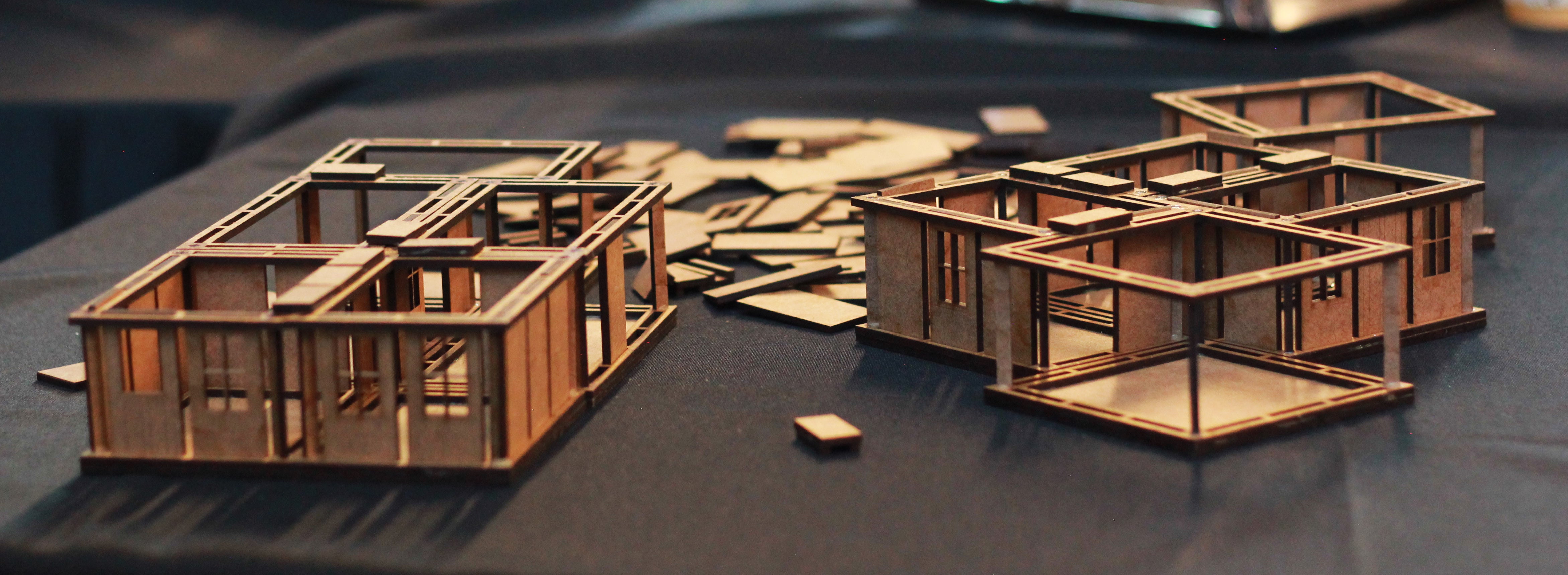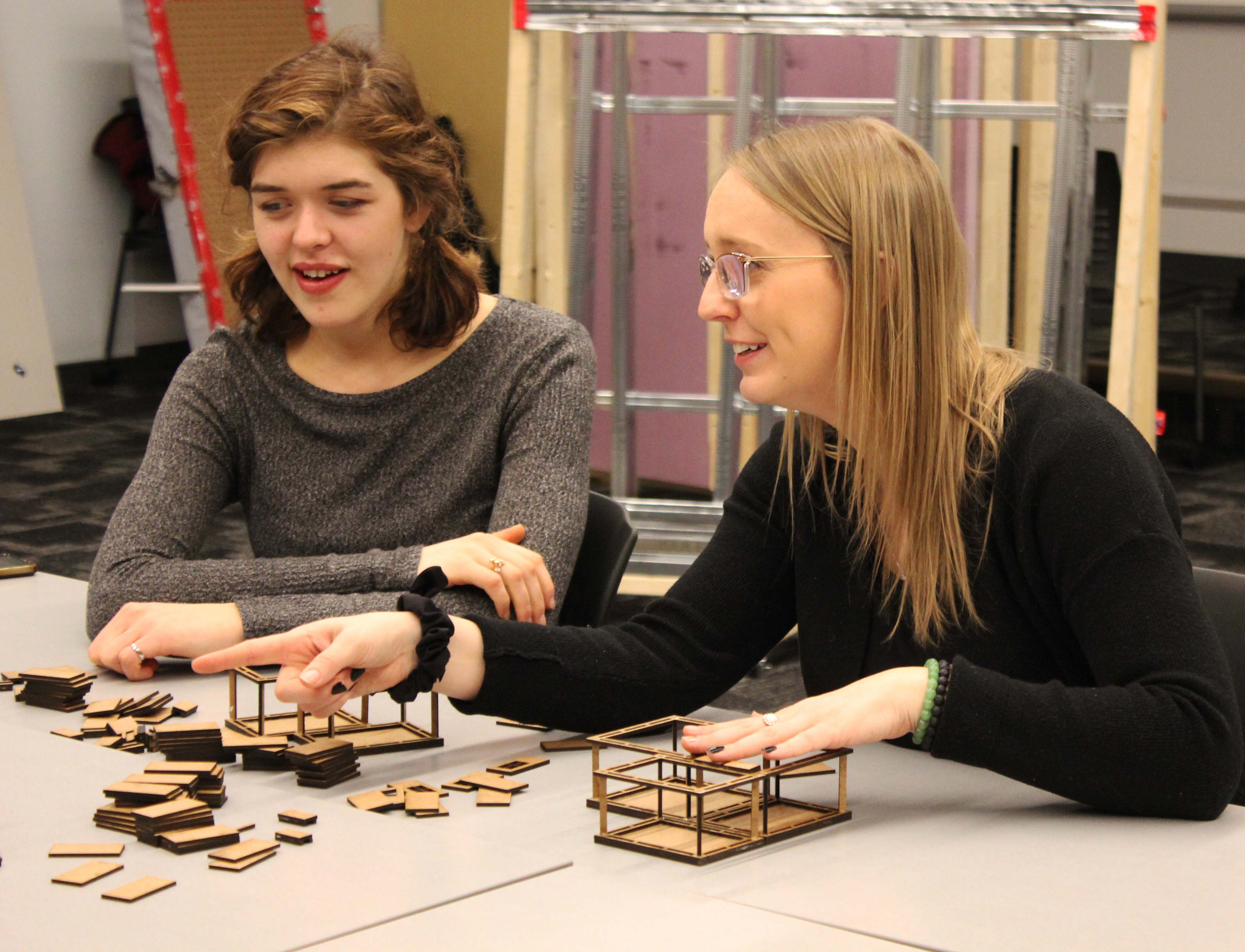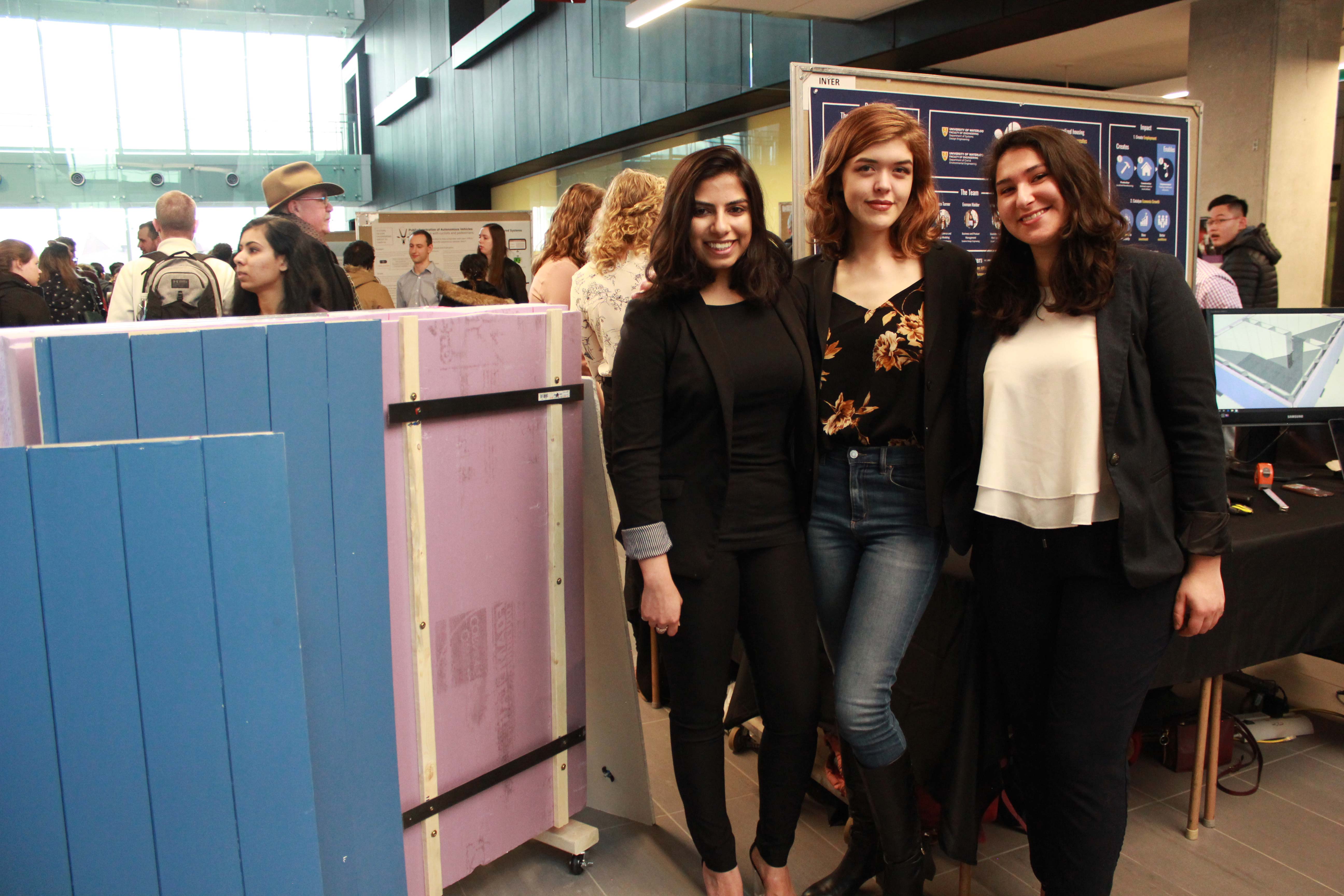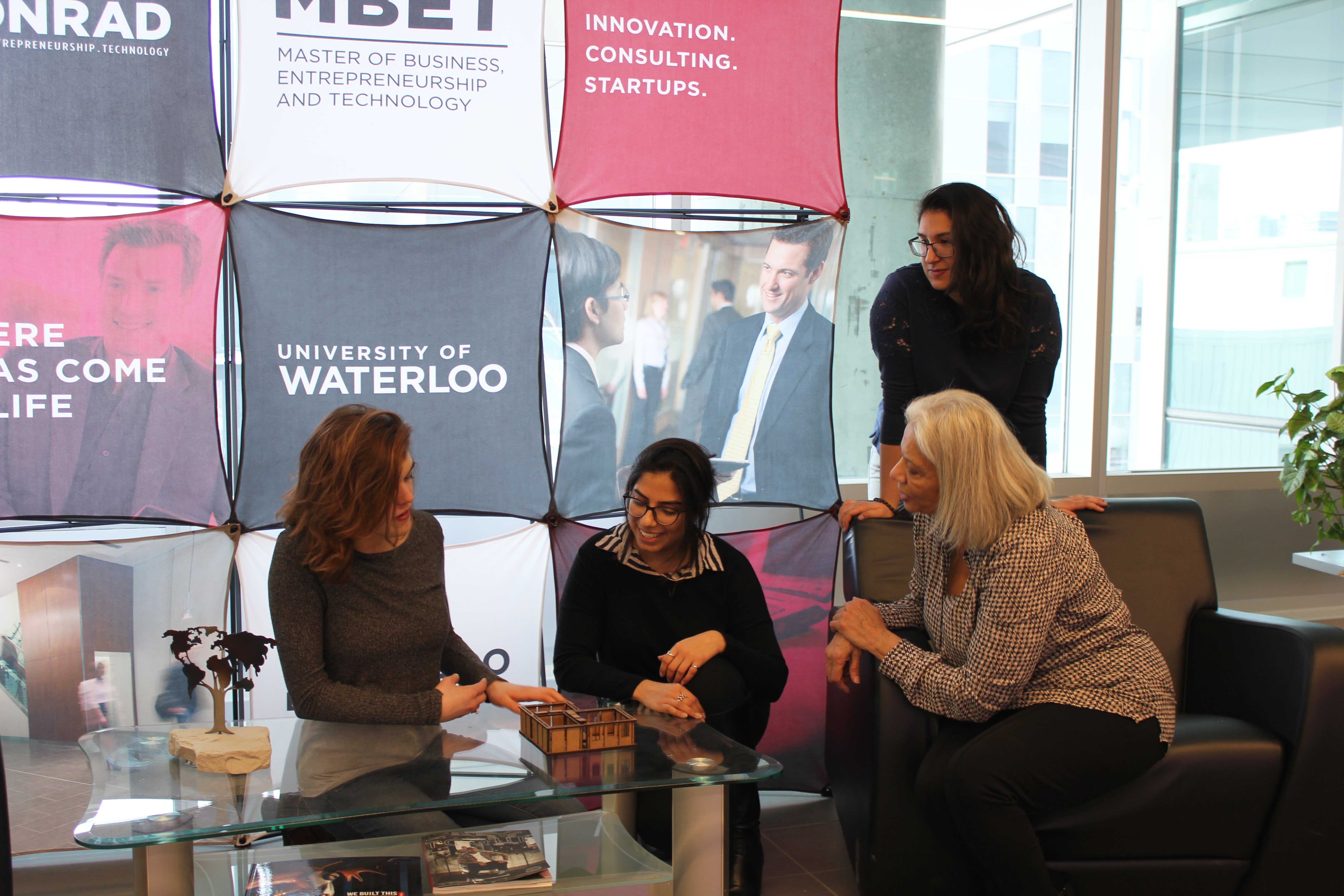
Students to pitch Canadian Indigenous housing solution down under
The Pulse Home team hopes to win over judges at the Hult Prize challenge in Australia

The Pulse Home team hopes to win over judges at the Hult Prize challenge in Australia
By Carol Truemner Faculty of EngineeringThree Waterloo Engineering students have come up with a unique solution they feel may solve the housing crisis in Atlantic Canada’s Indigenous communities and possibly take a top award in Australia at the Hult Prize challenge, the world’s largest student social entrepreneurship competition.
Emman Haider and Paula Przybylski, both systems design engineering students, and Sara Turner, an environmental engineering student, have developed a panelized housing system to meet the needs of Indigenous people in the Maritimes as their fourth-year engineering Capstone Design project called Pulse Home.

Miniature model of proposed Indigenous modular housing.
The students came up with the idea after Turner approached Habitat for Humanity, the world’s most successful housing charity, for project advice. She had worked with the non-profit organization as the senior design lead for Warrior Home, an award-winning University of Waterloo student team, which developed green technology solutions in houses.
“Sara let them know that her Capstone team was interested in working on a housing project related to Indigenous reconciliation,” says Haider. “They brought up the need for three Atlantic Indigenous communities to find a housing solution, specifically for their youth.”
Face-to-face meetings with Indigenous clients

Paula Przybylski of Pulse Homes, left and Emily Case, a teacher with Eel Ground First Nation work on assembling miniature models of recommended Indigenous housing solution.
Last November, the Pulse Home team travelled to Halifax where they met with their stakeholder group — representatives from Habitat for Humanity, Canada Mortgage and Housing Corporation and community members from Lennox Island First Nation, Paqtnkek First Nation and Eel Ground First Nation.
Through stakeholder discussions and visits to the three First Nation communities, Haider, Przybylski and Turner discovered one of the biggest challenges is that government funding for housing is going to external contractors to build homes due to a lack of skilled labour on reserves.
“A lot of youth are being forced to leave the community if they want any autonomy or independence. That is resulting in some very harsh situations in which youth often are having themselves incarcerated in order to have shelter and food,” says Haider. “It really is mind-blowing how large and complex the housing crisis is on these reserves.”
Unique panelized wall assembly
In response to the Indigenous housing problem, Pulse Home has come up with a design that aims to create jobs, promote economic growth and provide expandable housing to Indigenous communities.
The solution begins with one room with a modular panelized wall assembly that can easily be expanded into four or five rooms according to the needs of a growing family. The team has developed a prototype of the wall that can easily be built by the residents themselves, which will help reduce high unemployment in Indigenous communities, especially among youth. Next steps include designing a sustainable roof and floor for the house.

The Pulse Home team displays its panelized wall prototype at an Engineering Capstone Design symposium. (Left to right: Emman Haider, Paula Przybylski and Sara Turner.)
Incorporating an employment component into their Capstone Design project helped the students capture first place in the local leg of the international Hult Prize challenge, the theme of which is youth unemployment.
As the top team in the competition held last November in the Conrad School of Entrepreneurship and Business, Haider, Przybylski and Turner won the opportunity to compete April 11 and 12 in the 2019 Melbourne Regional Summit Finals of the Hult Prize.
Five other teams in the local Hult Prize challenge qualified for other regional competitions throughout the world. One of those teams, Better Bail for America, which came up with an inventive solution designed to help prevent youth unemployment in the U.S., finished first at the 2019 Mexico City Regional Summit Finals held last month.
Pulse Home has received over $26,000 of funding for further research and prototyping. Recently, the team was awarded funding from Waterloo’s Engineer of the Future Fund and earned $5,000 in the Velocity 5K winter term finals. Members also took first place honours in the Laurier Venture Competition winning $5,000 in funding and admission to the Accelerator Centre Reactor facility, dedicated to early-stage clients in the Accelerator Centre Momentum program.
History in the making
In March, Pulse Home’s project stakeholders, including representatives from the three Atlantic Canada First Nation communities, visited Waterloo’s campus for a project update.
Jay Thakar, manager of Indigenous partnerships for Habitat for Humanity, who travelled from Ottawa for the two-day session, is impressed with Pulse Home’s proposed solution to the Indigenous housing crisis in Atlantic Canada.
“This is the first time we are seeing what we are seeing – this is history in the making,” she says. “This is the first time the First Nations are providing their input into what they want and the Pulse Home team members are doing a remarkable job to meet their needs.”

The Pulse Home team demonstrated a model of its Indigenous housing solutions during a stakeholder visit on campus in March.

Read more
Here are the people and events behind some of this year’s most compelling Waterloo stories

Read more
Meet the five exceptional graduate students taking the convocation stage as Class of 2024 valedictorians

Read more
Meet the 13 exceptional students representing Waterloo’s newest grads
The University of Waterloo acknowledges that much of our work takes place on the traditional territory of the Neutral, Anishinaabeg, and Haudenosaunee peoples. Our main campus is situated on the Haldimand Tract, the land granted to the Six Nations that includes six miles on each side of the Grand River. Our active work toward reconciliation takes place across our campuses through research, learning, teaching, and community building, and is co-ordinated within the Office of Indigenous Relations.